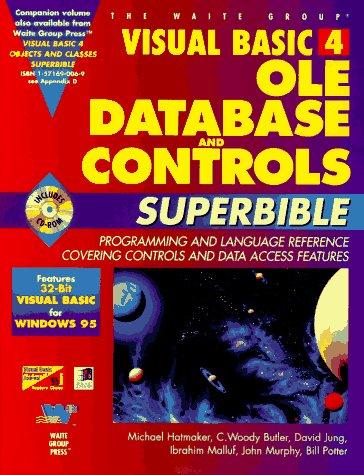Question
HW: Implement MyArrayStack (constructor, push, pop, peek and isEmpty), MyLinkedStack (constructor, push, pop, peek and isEmpty) and MyLinkedQueue (constructor, enqueue, dequeue, peek and isEmpty), and
HW:
- Implement MyArrayStack (constructor, push, pop, peek and isEmpty), MyLinkedStack (constructor, push, pop, peek and isEmpty) and MyLinkedQueue (constructor, enqueue, dequeue, peek and isEmpty), and write the following two program to test them. (5 points)
- For stack testing, write a program to check if a string has matching parenthesis such as (()), but not )(. (5 points)
- For stack testing, use it to Evaluating Expressions using the algorithm given below. (5 points)
- Animal Shelter: An animal shelter, which holds only dogs and cats, operates on a strictly "first in, first out" basis. People must adopt either the "oldest"(based on arrival time) of all animals at the shelter, or they can select whether they would prefer a dog or a cat (and will receive the oldest animal of that type). They cannot select which specific animal they would like. Create the data structures to maintainthis system and implement operations such as enqueue, dequeueAny, dequeueDog, and dequeueCat. You may use the myLinkedlist data structure you created in previous homework.
The Algorithm for Step 3:
Phase 1: Scanning the expression
The program scans the expression from left to right to extract operands, operators, and the parentheses.
1.1. If the extracted item is an operand, push it to operandStack.
1.2. If the extracted item is a +or -operator, process all the operators at the top of operatorStackand push the extracted operator to operatorStack.
1.3. If the extracted item is a *or /operator, process the *or /operators at the top of operatorStackand push the extracted operator tooperatorStack.
1.4. If the extracted item is a (symbol, push it to operatorStack.
1.5. If the extracted item is a )symbol, repeatedly process the operators from the top of operatorStackuntil seeing the (symbol on the stack.
Phase 2: Clearing the stack
Repeatedly process the operators from the top of operatorStackuntil operatorStackis empty.
------------------------------------------------------------------------------------------------------------------------------------------------------------------------------------------------------------------------------------------
Here is my code:
-----------------------------------
MyArrayStack.java
import java.util.*;
public class MyArrayStack
private ArrayList
public int getSize(){
return list.size();
}
public E peek(){
return list.get(getSize() - 1);
}
public void push(E e){
list.add(e);
}
public E pop(){
E e = list.get(getSize() - 1);
list.remove(getSize() - 1);
return e;
}
public boolean isEmpty(){
return list.isEmpty();
}
public String toString(){
return "Stack: " + list.toString();
}
}
--------------------
MyLinkedStack.java
import java.util.NoSuchElementException;
public class MyLinkedStack
private class Node
public Node
public E item;
public Node(E item, Node
this.item = item;
this.next = next;
}
public Node() {
}
public boolean isEnd() {
return next == null && item == null;
}
}
private Node
public void push(E e) {
top = new Node<>(e, top);
}
public boolean isEmpty() {
return top.isEnd();
}
public E pop() {
if (isEmpty())
throw new NoSuchElementException("Stack is empty");
E result = top.item;
top = top.next;
return result;
}
public E peek(){
return top.item;
}
public static void main(String[] args) {
MyLinkedStack
for(int i=0;i<20;i++)
stack.push(i);
while(!stack.isEmpty()){
System.out.print(stack.peek()+":");
System.out.println(stack.pop());
}
}
}
-------------------------
MyLinkedQueue.java
import java.util.NoSuchElementException;
@SuppressWarnings("unused")
public class MyLinkedQueue
private int currentSize;
private Node
private class Node
public Node
public AnyType item;
public Node(AnyType item, Node
this.next=next;
this.item=item;
}
}
public MyLinkedQueue(){
front=rear=new Node<>(null,null);
}
public void enqueue(AnyType item){
rear.next=new Node<>(item,null);
rear=rear.next;
currentSize++;
}
public AnyType dequeue(){
if(isEmpty())
throw new NoSuchElementException("Queue is empty");
front=front.next;
return front.item;
}
public boolean isEmpty(){
return front==rear;
}
public static void main(String[] args) {
MyLinkedQueue
for(int i=0;i<20;i++)
que.enqueue(i);
while(!que.isEmpty())
System.out.print(que.dequeue()+" ");
que.enqueue(1000);
System.out.println(que.dequeue());
System.out.println(que.dequeue());
}
}
Step by Step Solution
There are 3 Steps involved in it
Step: 1

Get Instant Access to Expert-Tailored Solutions
See step-by-step solutions with expert insights and AI powered tools for academic success
Step: 2

Step: 3

Ace Your Homework with AI
Get the answers you need in no time with our AI-driven, step-by-step assistance
Get Started


